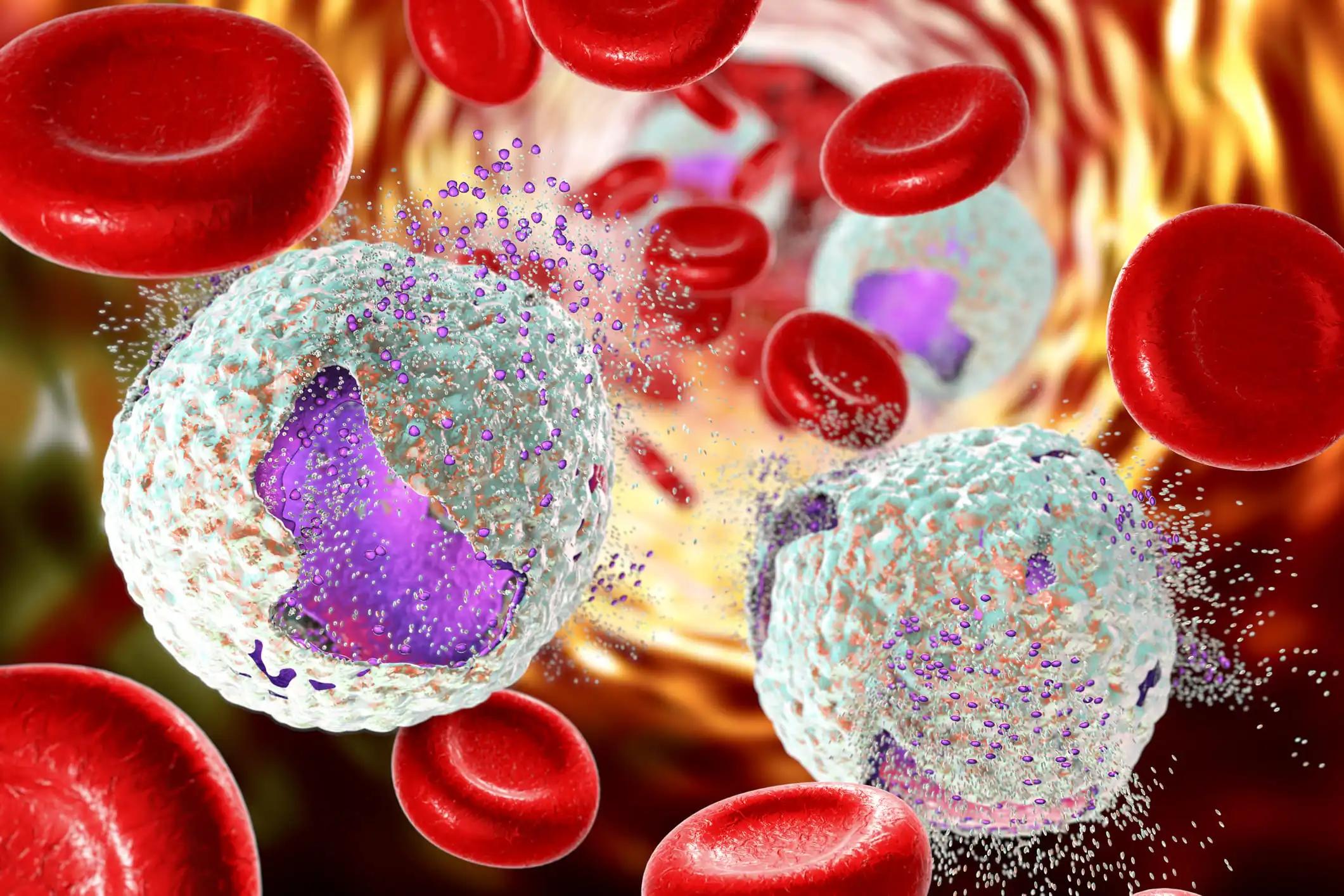KEY TAKEAWAYS
- The phase III trial aimed to investigate the efficacy and safety of N-AVD versus Bv-AVD in newly diagnosed AS HL elderly patients.
- The primary endpoint was to determine the PFS.
- N-AVD demonstrated superior PFS, EFSl, and tolerability compared to Bv-AVD. These findings suggest N-AVD as a promising new SOC for eligible individuals.
Elderly patients (≥60 years) with classic Hodgkin lymphoma (HL) exhibit diminished survival rates compared to their younger counterparts, attributable to factors such as comorbidities, compromised performance status, reduced chemotherapy tolerance, and increased treatment-related toxicity and mortality.
The frontline regimen, brentuximab vedotin-AVD (Bv-AVD), poses challenges in administration for older patients, notably due to associated toxicities, particularly infection and neuropathy. The effectiveness of PD-1 blockade in HL is underscored by the central role of the PD-1 pathway in the disease’s pathogenesis.
Sarah C. Rutherford and her team aimed to compare Nivolumab-AVD (N-AVD) with Bv-AVD in patients with newly diagnosed advanced-stage Hodgkin lymphoma (AS HL). About 994 patients were enrolled, and the study focuses on the evaluation of 97 eligible participants aged 60 years or older.
Patients were randomized 1:1 to receive 6 cycles of either N-AVD or Bv-AV. Granulocyte colony-stimulating factor (G-CSF) prophylaxis for neutropenia was optional with N-AVD and mandatory with Bv-AVD. Pre-specified patients had the option to undergo radiation therapy (RT) for residual lesions identified on end-of-treatment PET scans. Stratification factors included age, international prognostic score (IPS), and the intent to use RT. Investigators, following the 2014 Lugano Classification, assessed response and progression. The primary endpoint was progression-free survival (PFS), with secondary endpoints included overall survival (OS), event-free survival (EFS), and a comprehensive analysis of toxicity and safety events.
EFS events comprised death without progression, progression/relapse, receipt of non-protocol systemic anti-lymphoma therapy without progression, or receipt of RT in a patient not initially eligible or not meeting protocol-specified criteria for RT.
About 97 patients aged ≥60 years were enrolled and randomized into Nivolumab-AVD (N-AVD) (n=48) or Brentuximab vedotin-AVD (Bv-AVD) (n=49) groups. Median age was 66 years (range, 60-83), with 62% males, 86% white, 3% black, and 10% Hispanic. Stage IV disease was 61%, and 47% had IPS 4-7. While 69% on N-AVD and 92% on Bv-AVD received any G-CSF, no patients received radiation therapy (RT) as per protocol.
Safety analysis of 95 evaluable patients revealed higher grade (gr) ≥3 hematologic toxicity in N-AVD (52%) compared to Bv-AVD (38%) (gr 3 neutropenia: 48% vs 30%). Notably, febrile neutropenia, sepsis, and infections occurred less frequently with N-AVD. Peripheral neuropathy was markedly lower with N-AVD in overall incidence (sensory: 31% vs 66%, motor: 8% vs 15%) and severity (grades ≥2, sensory: 10% vs 49%, motor: 0% vs 8%). N-AVD showed lower frequencies (mainly <gr 3) of nausea (38% vs 62%), diarrhea (25% vs 45%), anorexia (15% vs 38%), and weight loss (4% vs 36%). Conversely, hypothyroidism (15% vs 0%) and rash (16% vs 2%, no gr ≥3) were more frequent on N-AVD, with similar rates of other immune-related toxicities between arms.
The results demonstrated superior PFS compared to Brentuximab vedotin-AVD (Bv-AVD) [HR 0.35 (95% CI 0.12-1.02), P=0.022]. The 1-year PFS was 93% (95% CI 79-98%) for N-AVD and 64% (95% CI 45-77%) for Bv-AVD. One-year EFS favored N-AVD with a rate of 93% (95% CI 79-98%) compared to 57% (95% CI 38-72%) for Bv-AVD [HR 0.19 (95% CI 0.06-0.61), P=0.0011].
One-year OS showed a trend favoring N-AVD (95%, 95% CI 83-99%) over Bv-AVD (83%, 95% CI 67-92%) [HR 0.35 (95% CI 0.07-1.75), P=0.091]. On N-AVD, 2 deaths (due to infection/sepsis) and 3 progressions/relapses occurred, while Bv-AVD had 7 deaths (5 due to infection/sepsis, 1 to pneumonitis, 1 unknown) and 8 progressions/relapses.
Non-relapse mortality was 4% for N-AVD vs 14% for Bv-AVD. Treatment discontinuation rates were lower in N-AVD (10%) compared to Bv-AVD (33%), with early discontinuations for adverse events (AE) in 5 vs. 14 patients, death in 1 vs. 3 patients, and disease progression in 0 vs. 1 patient for N-AVD and Bv-AVD, respectively.
The study concluded that N-AVD outperforms Bv-AVD in elderly advanced-stage HL with improved survival, lower toxicity, and fewer deaths, making it a potential new standard of care (SOC).
Source: https://ash.confex.com/ash/2023/webprogram/Paper180114.html
Clinical Trial: https://clinicaltrials.gov/study/NCT03907488
Rutherford SC, Li H, Herrera AF, et al. (2023)’’ Nivolumab-AVD Is Better Tolerated and Improves Progression-Free Survival Compared to Bv-AVD in Older Patients (Aged ≥60 Years) with Advanced Stage Hodgkin Lymphoma Enrolled on SWOG S1826.’’ Presented at ASH 2023 (181)



